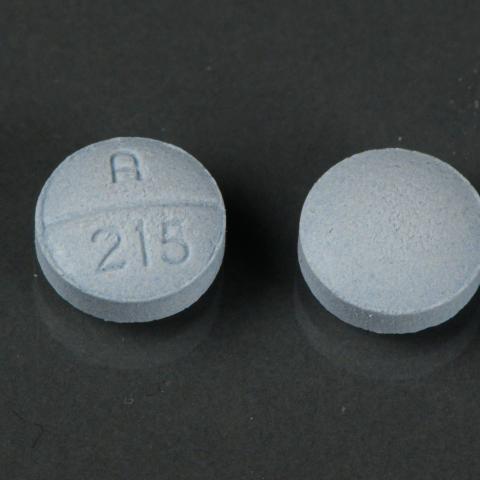Recognizing the Various Sorts Of Oxycodone Formulations Available out there
In the world of discomfort management, oxycodone stands as a potent analgesic with different solutions customized to specific demands. Recognizing the nuances between immediate-release, extended-release, controlled-release, mix, and abuse-deterrent formulations is vital for medical care suppliers and patients alike. Each alternative deals a special set of factors to consider and benefits, affecting treatment effectiveness and safety accounts. By delving into the distinctive qualities of these oxycodone solutions, a clearer photo arises concerning their viability for different professional scenarios.
Immediate-Release Oxycodone
Immediate-release oxycodone is an extensively recommended opioid drug commonly utilized to take care of sharp pain. It belongs to a class of medicines referred to as opioid anesthetics, which work by binding to opioid receptors in the brain and spine cable, reducing the assumption of pain. This formula of oxycodone is made to supply fast pain alleviation, commonly within 15 to half an hour of ingestion, with peak impacts happening within 1 to 2 hours.
Doctor might recommend immediate-release oxycodone for problems such as post-operative discomfort, injuries, or various other temporary agonizing problems. When taking immediate-release oxycodone to minimize the risk of side results and difficulties., it is vital for people to follow their medical care service provider's instructions thoroughly.
Extended-Release Oxycodone
Provided the requirement for longer-lasting pain monitoring options in particular situations, Extended-Release Oxycodone uses a sustained-release formula of the medicine for prolonged alleviation. This formula is created to progressively launch oxycodone right into the blood stream over an extensive duration, generally giving alleviation for approximately 12 hours per dose. Extended-Release Oxycodone is typically suggested for individuals needing ongoing discomfort administration that can not achieve adequate alleviation with immediate-release formulations alone.
One of the key advantages of Extended-Release Oxycodone is its ability to keep constant drug levels in the body, decreasing the frequency of dosing contrasted to immediate-release solutions. This extensive application period can cause boosted convenience for patients and possibly far better discomfort control by minimizing fluctuations in medicine focus.
It is crucial to keep in mind that Extended-Release Oxycodone lugs a high threat of dependency, misuse, and abuse, stressing the significance of stringent adherence to the recommended application programs and close tracking by medical care suppliers. Individuals must just utilize this formula under the guidance of a health care expert to lessen the threat of unfavorable results.
Controlled-Release Oxycodone
How does Controlled-Release Oxycodone differ from Extended-Release formulations hurting management methods?

Contrasted to Extended-Release solutions, Controlled-Release Oxycodone might supply a more predictable and exact release of the medication. This can be valuable for patients requiring consistent discomfort monitoring without the fluctuations that might accompany various other formulations. Furthermore, Controlled-Release Oxycodone may be preferred in cases where a much more regulated and steady release of the medication is preferred to manage chronic discomfort problems successfully.
Oxycodone Combination Formulations
Oxycodone Mix Formulas incorporate oxycodone with other energetic ingredients to boost pain management efficiency. By combining oxycodone with materials such as acetaminophen or pain killers, these formulations aim to provide a collaborating impact in easing discomfort (Buy Oxycodone online). Acetaminophen, for instance, can enhance oxycodone's analgesic homes by targeting different pain paths, potentially leading to boosted pain alleviation
One common oxycodone mix formulation is Percocet, which mixes oxycodone with acetaminophen. This combination is often prescribed for modest to serious discomfort administration. Another well-known formula is Endocet, which additionally integrates oxycodone with acetaminophen, providing similar advantages in pain control.
The addition of various other active ingredients in oxycodone mix formulations can additionally assist decrease the total opioid dosage required for efficient pain relief, potentially decreasing the risk of adverse effects related to higher opioid doses. It is essential for healthcare service providers to thoroughly assess each patient's demands and clinical history prior to suggesting oxycodone mix solutions to guarantee efficient and risk-free discomfort management.
Abuse-Deterrent Oxycodone
Abuse-deterrent formulas of oxycodone have actually been established to assist minimize the risks linked with opioid misuse and abuse. These formulas are created to make it a lot more difficult to meddle with the medicine for the objective of misuse. They include particular innovations that deter common approaches of abuse, such as squashing the tablets for snorting or infusing. By making it tougher to alter the medication's initial form, abuse-deterrent oxycodone intends to decrease the possibility of abuse and addiction.
One common approach made use of in abuse-deterrent formulas is the enhancement of physical obstacles that avoid the tablets from being crushed or liquified quickly. Some formulas likewise include substances that produce an unpleasant result if the medicine is damaged, even more discouraging abuse. While these formulas are not sure-fire and can not website link totally eliminate the here threat of abuse, they stand for a progression in addressing the opioid epidemic by making it harder for individuals to misuse oxycodone.
Final Thought
Finally, it is important for healthcare specialists to comprehend the different kinds of oxycodone solutions available in the marketplace. Immediate-release, extended-release, controlled-release, mix formulations, and abuse-deterrent oxycodone each have their own one-of-a-kind characteristics and indications. By being experienced concerning these formulations, medical care suppliers can make informed decisions when suggesting oxycodone to people, taking into account aspects such as discomfort management requires, potential for misuse, and specific patient danger factors.
Extended-Release Oxycodone is typically prescribed for individuals needing 24/7 pain management that can not attain ample alleviation with immediate-release formulas alone. - Buy Oxycodone online
